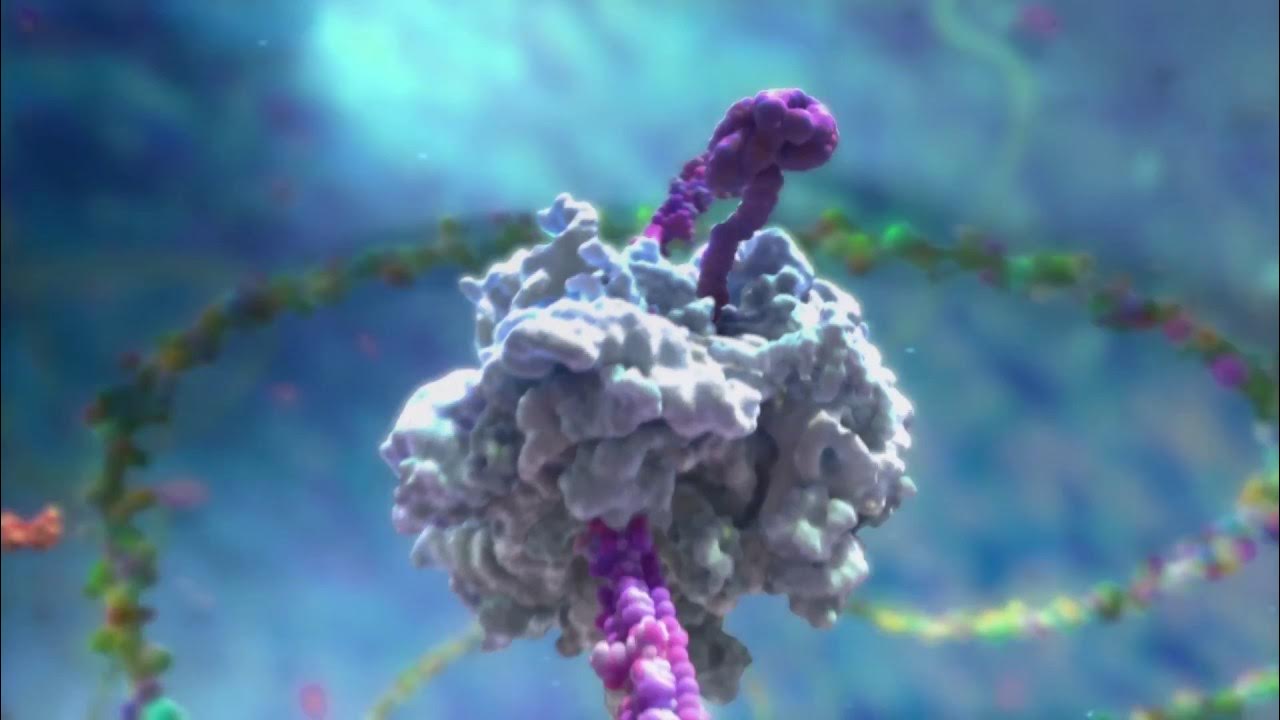How Biologic Medicines Are Made | How It's Made
Summary
TLDRThis script outlines the production process of biologic medicines, which are proteins created in living cells. It begins with the insertion of genetic material into CHO cells, followed by cell multiplication in growth media. The cells are then transferred to a bioreactor where they exponentially increase, producing the target protein. The protein is purified through a series of steps, including separation from cellular material and a purification solution process. The final product is tested for sterility, highlighting the meticulous process behind these life-changing medicines.
Takeaways
- 🧬 Biologic medicines are proteins produced inside living cells, offering a different approach from traditional chemically synthesized drugs.
- 🔬 Chinese hamster ovarian cells (C.H.O. cells) are used as the host cells for producing biologic medicines.
- ❄️ C.H.O. cells are stored frozen in liquid nitrogen until needed for production.
- 🌡️ In the seed lab, cells are thawed in warm water and transferred to a growth media containing essential nutrients to promote cell multiplication.
- 🧪 The growth media is a crucial component, providing vitamins and minerals necessary for cell growth and multiplication.
- 🌱 The cells are transferred to a bioreactor where a propeller agitates the mixture to stimulate growth over a three-week period.
- 📈 The number of cells increases exponentially, each programmed to produce the target biologic protein.
- 🧴 The purification process involves measuring salts and other dry ingredients to prepare a solution for protein separation.
- 🏷️ Technicians label and record information about the ingredients and processes as required by government regulations.
- 🔄 An automated system monitors the purification solution's condition after cellular material is separated from the protein mixture.
- 🔬 Purification involves pumping the mixture through columns containing resin beads to separate the protein from impurities.
- 🌡️ A final test is conducted to ensure the medicine is sterile before it is ready for use.
Q & A
What are biologic medicines?
-Biologic medicines are proteins produced inside living cells, which serve as mini factories for genetically-engineered protein treatments.
How do biologic medicines differ from traditional drugs?
-Biologic medicines are produced using living cells, whereas traditional drugs are manufactured using chemical synthesis.
What role do Chinese Hamster Ovarian (CHO) cells play in the production of biologic medicines?
-CHO cells are used as the host cells into which genetic material is inserted to produce the target biologic protein.
Why are the CHO cells kept frozen in liquid nitrogen?
-CHO cells are kept frozen in liquid nitrogen until needed for the production process to preserve their viability and ensure consistency.
What is the purpose of the growth media in the production process?
-The growth media, containing hundreds of nutrients including vitamins and minerals, is used to help the cells multiply and support their growth.
How does the process of cell multiplication occur in the bioreactors?
-The mixture containing the cells is injected into a bioreactor where a propeller agitates the mixture to stimulate growth, leading to an exponential increase in cell numbers over a three-week period.
What is the function of the purification process in the production of biologic medicines?
-The purification process is used to separate the target biologic protein from the cells and other impurities, ensuring the medicine is pure and sterile.
How is the protein liquid prepared for purification after it has been separated from the cells?
-A technician measures salts and other dry ingredients to prepare a recipe for purifying the protein liquid, which is then added to purified water in a mixing tank.
What is the role of the steel-and-glass columns in the purification process?
-The protein mixture is pumped through steel-and-glass columns where a purification solution works with resin beads to separate the protein from impurities.
How is the sterility of the final biologic medicine ensured?
-A technician takes a sample of the purified medicine and conducts a test to ensure it is sterile before it can be used for treatment.
What is the potential impact of biologic medicines on people's lives?
-Biologic medicines offer hope where other therapies have failed, potentially making a significant difference in the lives of patients by providing effective treatments for various conditions.
Outlines

Этот раздел доступен только подписчикам платных тарифов. Пожалуйста, перейдите на платный тариф для доступа.
Перейти на платный тарифMindmap

Этот раздел доступен только подписчикам платных тарифов. Пожалуйста, перейдите на платный тариф для доступа.
Перейти на платный тарифKeywords

Этот раздел доступен только подписчикам платных тарифов. Пожалуйста, перейдите на платный тариф для доступа.
Перейти на платный тарифHighlights

Этот раздел доступен только подписчикам платных тарифов. Пожалуйста, перейдите на платный тариф для доступа.
Перейти на платный тарифTranscripts

Этот раздел доступен только подписчикам платных тарифов. Пожалуйста, перейдите на платный тариф для доступа.
Перейти на платный тариф5.0 / 5 (0 votes)






